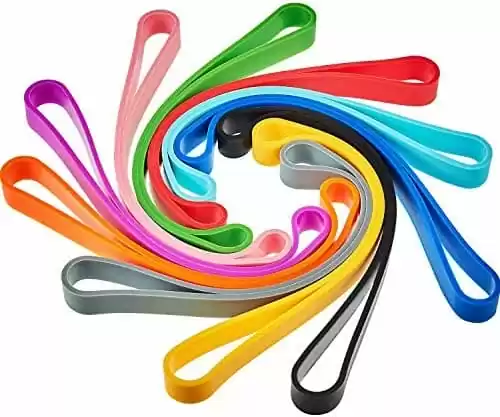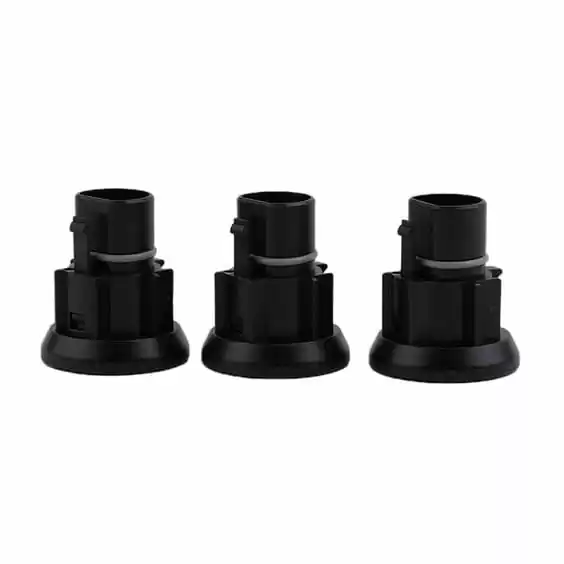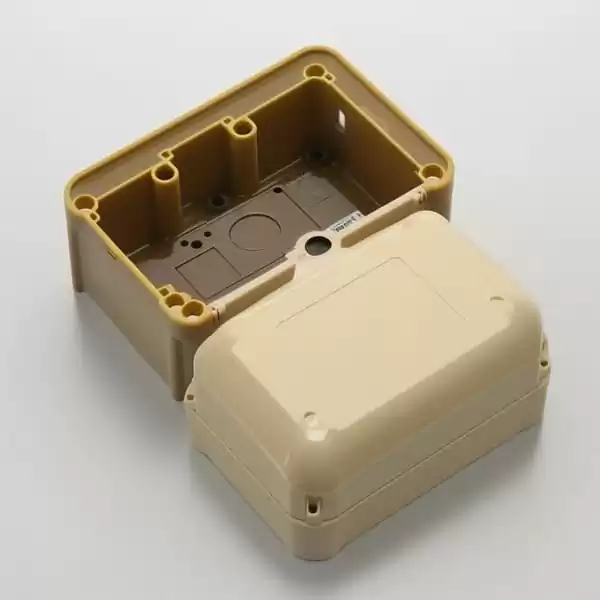Introduction
The rapid evolution of the electronics industry has sparked an insatiable demand for innovation and efficiency. As the world becomes increasingly interconnected and reliant on electronic devices, the role of manufacturing has taken center stage. In this intricate dance of technology and the production process, a transformative player has emerged: plastic injection molding.
In the symphony of electronics manufacturing, where precision, complexity, and cost-effectiveness must harmonize seamlessly, injection molding has carved out a distinct and indispensable niche. With the capability to create intricate shapes, facilitate rapid prototyping, and yield cost-efficient results, plastic injection molding process stands as a beacon of ingenuity within the realm of electronics production.
In this article, we embark on a journey into the heart of electronics manufacturing, where precision meets innovation. We will delve into the intricacies of injection molding plastic , exploring how its precision, versatility, and efficiency have firmly established it as an ideal solution for meeting the demands of the modern electronics industry. From the inception of an idea to the final product, injection molding’s relevance to electronics manufacturing unfolds as an essential chapter in the ongoing saga of technological progress.

Precision and Complex Geometry
The artistry of custom injection molding lies in its remarkable ability to transform molten material into intricate, precise, and finely detailed shapes that are the backbone of modern electronics. Let’s take a closer look at how this manufacturing marvel achieves such exquisite precision and the pivotal role it plays in crafting electronic plastic parts with tight tolerances.
Achieving Precise and Intricate Shapes
At the heart of injection molding is a meticulously orchestrated dance of engineering and science. The process begins with small plastic pellets, which are fed into an injection molding machine. Within this mechanical marvel, the pellets are heated to their molten state, ready to be shaped with remarkable accuracy.
The secret to injection molding’s precision lies in the injection mold itself. This mold is a meticulously crafted masterpiece, designed with impeccable detail to create the desired shape. Once the molten plastic material is injected into the mold, it fills every nook and cranny, capturing even the most delicate features. As the material cools and solidifies, it faithfully mirrors the intricacies of the mold, resulting in a flawless reproduction of the intended design.

Role of Precision in Electronic Components
In the world of electronics, precision is not merely a desirable trait; it’s a non-negotiable requirement. The creation of electronic components with tight tolerances ensures that they fit seamlessly into devices, maintaining optimal functionality and performance. A slight deviation can lead to malfunction or reduced efficiency, which is simply unacceptable in the highly competitive electronics landscape.
Consider, for instance, connectors that form the lifelines of various electronic devices. These tiny yet critical components must align perfectly, ensuring reliable data transfer and power distribution. Sensor housings, on the other hand, protect sensitive mechanisms that detect and respond to various stimuli. Any deviation in their geometry could compromise accuracy and responsiveness, rendering them ineffective.

Examples of Intricate Parts
The breadth of electronic components that benefit from injection molding’s precision is astonishing. From the automotive industry where sensor housings play a vital role in vehicle diagnostics, to consumer electronics where connectors facilitate seamless connectivity, injection molding leaves no room for error.
Picture the intricate web of connectors within your smartphone, enabling lightning-fast communication between components. Each connector’s minute dimensions and intricate design demand a manufacturing process that can replicate them faithfully, and injection molding steps up to the challenge. Similarly, medical devices rely on injection-molded parts for accurate measurements and diagnostics, underscoring the importance of precision in saving lives.
In essence, the precision achieved through injection molding forms the bedrock of the modern electronics industry. It bridges the gap between design and reality, translating intricate blueprints into tangible, high-performance components. As we venture deeper into the world of injection molding, we uncover its additional layers of prowess, each contributing to its status as an indispensable force in electronics manufacturing.
Cost Efficiency
In the relentless pursuit of progress, the role of cost efficiency in modern manufacturing cannot be overstated. As industries strive to balance innovation and profitability, a key player emerges on the stage of production: cost-efficient manufacturing processes. Let’s delve into the intriguing realm of cost efficiency within the context of plastic injection molding, exploring the initial investment, long-term advantages, and the remarkable cost savings achieved through this ingenious method.
The Economics of Manufacturing: A Balancing Act
Modern manufacturing is an intricate dance between creativity and economics. While innovation fuels the creation of groundbreaking products, economic viability ensures their accessibility to the masses. This is where the concept of cost efficiency steps into the spotlight.

At the inception of any manufacturing process, a critical consideration is the initial tooling costs. The creation of molds, which dictate the final shape of the injected plastic, often involves a significant upfront investment. This expense might appear daunting, particularly for small-scale productions. However, this initial outlay lays the foundation for a cascade of long-term benefits that ripple through the entire production cycle.
Unveiling the Long-Term Advantages
The initial tooling costs are akin to setting the stage for a grand theatrical production. Once the molds are meticulously crafted and the curtain rises on the injection molding process, a symphony of efficiency begins. Each injection molding cycle churns out components with astonishing precision and speed, reflecting the intricacies of the various injection molding machines with unwavering fidelity.
The true magic of injection molding’s long-term benefits lies in mass production. As the production volume scales up, the once formidable initial investment per mold begins to diminish in significance. The cumulative cost of producing each individual injection unit or part drops drastically, resulting in a per-unit cost that is a fraction
of the initial outlay. This phenomenon is at the heart of the manufacturing world’s enduring quest for economies of scale.

Reduced Material Wastage: A Virtuous Cycle
Cost efficiency doesn’t just manifest in economies of scale—it extends to the responsible use of resources. Injection molding’s precise nature minimizes the generation of waste, and this judicious use of materials further contributes to cost savings. Unlike some manufacturing processes that produce excess material that must be trimmed away, injection molding fills the mold with the exact amount of plastic required. This reduction in waste not only conserves valuable resources but also reduces production costs.
Consider a scenario where intricate plastic components are meticulously fashioned through injection molding. The process ensures that each component is produced with precision, eliminating the need for excess material. This efficiency not only minimizes waste but also conserves energy and reduces the environmental footprint—an admirable testament to the symbiotic relationship between cost efficiency and sustainability.
In the grand tapestry of manufacturing, cost efficiency is a thread that weaves innovation into the fabric of accessibility. Injection molding, with its initial investment, long-term benefits, and capacity for mass production, exemplifies this delicate balance. As we venture further into the multifaceted world of cost efficiency, we’ll uncover additional layers of ingenuity, each reinforcing injection molding’s position as an ideal solution for the intricate dance of electronics manufacturing.
Material Variety
In the realm of electronics production, diversity is not just a virtue—it’s an essential ingredient for success. The dynamic landscape of electronic devices demands a kaleidoscope of materials, each chosen with precision to deliver optimal performance. As we step into the world of material variety in electronics manufacturing, we uncover the pivotal role that injection molding plays in accommodating this diverse palette of possibilities.
The Mosaic of Electronics Production: A Material Kaleidoscope
From the circuitry of smartphones to the intricate mechanisms within medical devices, the array of electronic components is as diverse as the functions they serve. This diversity extends to the materials that form their foundation. The need for specific characteristics—be it electrical conductivity, heat resistance, or mechanical strength—drives the demand for a rich assortment of materials.
In the symphony of electronics manufacturing, materials are the instruments that compose the melodies of innovation. Imagine the conductivity of copper for intricate circuitry, the insulating properties of polymers for protective casings, and the thermal conductivity of alloys for efficient heat dissipation. Each material is carefully chosen to perform a specific role, creating a harmonious ensemble of function and form.
Injection Molding: The Maestro of Material Accommodation
Enter injection molding, the maestro that orchestrates the harmonious integration of diverse materials into the symphony of electronic components. This manufacturing process boasts a level of versatility that allows it to seamlessly accommodate an impressive array of plastics and components. From commodity plastics to advanced engineering polymers, injection molding is akin to a chameleon, effortlessly adapting to the unique properties of each material.
The process begins with the selection of the appropriate plastic material, be it a thermoplastic that can be melted and solidified multiple times or a specialized polymer with enhanced properties. The molten material, under precise control, flows into the intricately designed mold. As it cools and takes shape, it inherits the material’s attributes, ready to fulfill its role in the electronic symphony.

Material Properties Tailored to Electronics
The marriage of injection molding’s versatility and the diverse palette of materials yields components tailor-made for the demands of electronics. For instance, electronic devices often require components with high electrical conductivity to facilitate seamless data flow. Injection molding can seamlessly integrate materials with conductive properties, ensuring that the final product is not only functional but also optimized for its intended application.
Consider the crafting of intricate plastic connectors using injection molding. These connectors are designed to establish a seamless link between various components, demanding precision and reliable conductivity. Injection molding allows for the incorporation of conductive materials within the plastic, transforming the connectors into efficient conductive pathways.
In this intricate dance of materials and manufacturing, injection molding stands as the conductor, seamlessly uniting diverse elements into a cohesive composition. Its ability to adapt to an array of materials and properties makes it an essential partner in the intricate choreography of electronics production. As we continue to explore the interplay between material variety and injection molding, we’ll discover even more layers of innovation that make this process an indispensable force in modern electronics manufacturing.
Quality and Consistency
Importance of Quality in Electronics Manufacturing
In the intricate realm of electronics, the concept of quality transcends mere excellence – it becomes the bedrock upon which functionality, reliability, and user satisfaction rest. Electronic devices, whether they power communication networks, drive medical breakthroughs, or enhance daily convenience, must adhere to stringent quality standards to fulfill their intended purpose without compromise.
Ensuring Consistent Quality with Injection Molding
Injection molding emerges as a stalwart champion in upholding the tenets of quality in electronics manufacturing. It is not solely the ability to create intricate and precisely designed components that sets injection molding apart, but also its steadfast commitment to consistent quality. This unwavering uniformity extends across each and every component produced through the injection molding process.
The marriage between cutting-edge technology and meticulous precision is what empowers injection molding to deliver components with unparalleled consistency. The carefully calibrated injection molding machines, monitored by advanced control systems, ensure that every part conforms to exact specifications. Each cycle of the molding process faithfully replicates the previous one, leaving no room for deviation or variability.

The Ripple Effect: How Quality Control Benefits Reliability
In the world of electronics, the influence of a single subpar component can ripple across the entire system, potentially leading to catastrophic consequences. This is where injection molding’s stringent quality control measures come into play, acting as a safeguard against such setbacks.
Throughout the injection molding process, stringent quality checks are woven seamlessly. Starting from the selection of raw materials – the plastic pellets that ultimately become the building blocks of electronic components – to the monitoring of injection pressure, clamping pressure, and cooling process, every step is scrutinized with unrelenting precision. Any deviation triggers immediate corrective action, ensuring that each component meets the highest standards of quality.
The implications of this rigorous quality control regimen extend far beyond the manufacturing floor. Electronic devices borne from injection molded components inherit the benefits of consistent quality. They emerge as reliable, resilient, and capable of performing with unwavering precision under a diverse range of conditions.
A Symphony of Reliability
In the symphony of electronics manufacturing, injection molding plays a pivotal role as the conductor of reliability. Through consistent quality control and precision engineering, it ensures that every note resonates harmoniously, creating a symphony of electronic devices that customers can trust, rely upon, and integrate seamlessly into their lives.
As industries push the boundaries of innovation and explore new frontiers, the reliability of electronic components remains a cornerstone. Injection molding, with its commitment to consistent quality, stands unwavering as a beacon of assurance in an ever-evolving landscape. The electronic devices we rely upon – from life-saving medical equipment to communication devices that bridge distances – owe a debt of gratitude to the injection molding process, a paragon of reliability that fortifies the foundation of modern electronics.

Conclusion
In conclusion, the marriage between injection molding and electronics manufacturing is a testament to the innovative prowess of modern engineering. Throughout this exploration, we’ve delved into the multifaceted advantages that injection molding brings to the realm of electronic components.
In the dynamic landscape of modern manufacturing, injection molding is not merely a solution; it’s a driving force that propels us forward. Its capabilities, adaptability, and transformative potential solidify its position as a cornerstone in the architecture of evolving manufacturing processes. In essence, injection molding isn’t just a tool; it’s a testament to the ingenuity of human creativity and engineering prowess, ensuring that the future of electronic components remains bright, innovative, and limitless.






